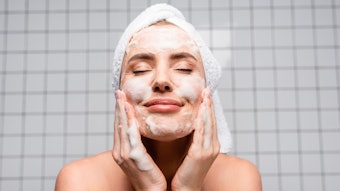Surface-active agents, or surfactants, are molecules that have both a water-soluble and an oil-soluble portion. Since both groups are on the same molecule, they orientate in water to obtain the lowest free energy. Initially this is at the air/water interface where a properly chosen surfactant can provide wetting and foam.
As the concentration of surfactant is raised above the so-called critical micelle concentration, aggregations called micelles form. It is interesting to note that despite the presence of micelles in water, if the micelles are small enough, the materials are still considered soluble because the structures are below the size that effects clarity. Solubility and homogeneity of concentration should not be confused. A surfactant present in water below its critical micelle concentration can be said to be soluble, but the concentration within the water is not uniform since most of the surfactant molecules are at the surface.
Surfactant properties such as foam, wetting and emulsification will change by changing the structure of the molecule, for example, by adding more ethylene oxide to a fatty alcohol ethoxylate. The ratio of water-soluble parts to oil-soluble parts changes as ethylene oxide is added, thus increasing the hydrophilic-lipophilic balance (HLB).
One occasionally overlooked structural property that has an effect on surfactant properties is branching. Most hydrophobes used to make surfactants are linear—for example, lauryl alcohol is typically CH3-(CH2)11OH a linear compound, as opposed to a methyl branched compound like CH3-(CH2)10 CH(CH3)OH. This article will address the effects of branching on specific surfactant properties.










!['Green is good but maybe not good enough. Future aspects will focus on more and additional aspects ... taking a look at the entire product lifecycle [and] looking at the entire value chain ...'](https://img.cosmeticsandtoiletries.com/files/base/allured/all/image/2023/08/Evonik_Value_Chain_Video_Interview_Sept_2023.64ecb11af2ee6.png?auto=format%2Ccompress&fit=crop&h=191&q=70&rect=264%2C115%2C1130%2C634&w=340)